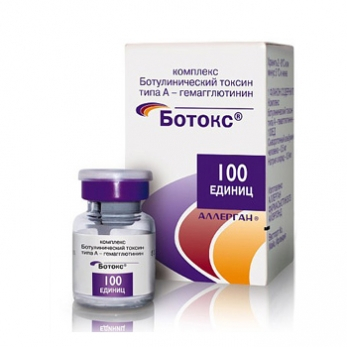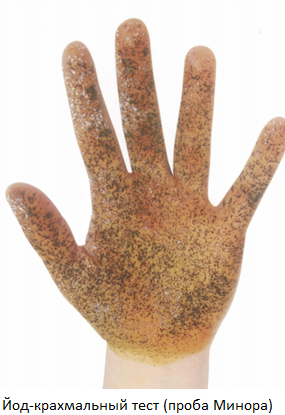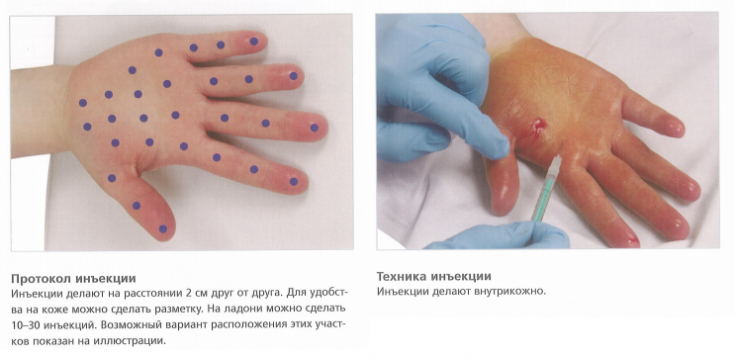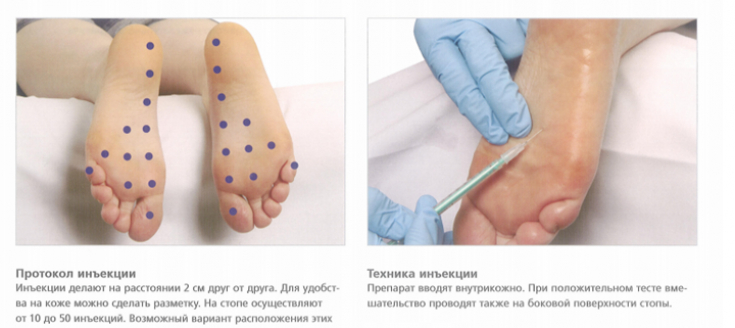Hyperhidrosis – it is a pathological condition characterized by excessive sweating that goes beyond the physiological needs of the body.
Hyperhidrosis can be both a manifestation of other pathologies (for example, thyrotoxicosis or climacteric syndrome), as well as an independent disease (primary hyperhidrosis).
In this article on estet-portal.com, together with the founder of the aesthetic medicine studio Dr. Anzhelika Aesthetic Studio, Anzhelika Bykovets, we will consider the clinical manifestations of primary hyperhidrosis, as well as the advantages and features of performing one of the most effective therapeutic techniques with hyperhidrosis – botulinum therapy.
Causes of development and classification of primary hyperhidrosis

Under normal conditions, perspiration is an important mechanism for thermoregulation: the release of sweat contributes to an increase in heat transfer from the skin surface.
Increased sweating is observed with hyperthermia, physical exertion, emotional distress and stress, and in such situations it is physiological.
Excessive sweating in primary hyperhidrosis is not due to any physiological need of the body and develops as a result of autonomic dysregulation.
Depending on the anatomical location of the areas of excessive sweating, primary hyperhidrosis can be classified as localized (axillary, plantar (plantar, or hyperhidrosis of the feet), palmar (palmar, or hyperhidrosis of the palms), facial) and generalized.
Botulinum Therapy – modern solution for primary axillary hyperhidrosis
Botulinum Therapy – effective alternative to conservative treatment of hyperhidrosis

In the treatment of palmar and palmar hyperhidrosis, topical agents containing aluminum chloride are the drugs of choice.
However, the clinical efficacy of this drug in palmar and plantar hyperhidrosis is inferior to that in axillary hyperhidrosis.
International guidelines also recommend iontophoresis as a treatment for primary hyperhidrosis. In many cases, iontophoresis can effectively treat the symptoms of hyperhidrosis of the hands and feet.
However, iontophoresis may cause local skin irritation and should not be used in patients with pacemakers.
Botulinum Therapy – an effective alternative in the treatment of primary hyperhidrosis, when conservative methods do not bring the proper therapeutic result. For the procedure of botulinum therapy for hyperhidrosis, the drug BOTOX® is used. from Allergan.
Follow us on Facebook
Minor Sample – determination of the zone of maximum sweating in hyperhidrosis

BOTOX injections® should be carried out in areas of maximum sweating.
To determine the zone of greatest sweating, most experts prefer to use the iodine-starch test (Minor's test) due to its simplicity and information content.
Minor Sample – a test to determine the zone of maximum sweating, which consists in applying Lugol's solution to clean, dry skin, after which it is treated with starch.
Due to the transfer of iodine ions to starch, its color changes – it takes on a blue tint. As a result, the area of greatest sweating turns blue (or a shade of blue).
Before the direct manipulation, for the convenience of performing injections on the palms and feet, preliminary marking can be performed.
Botulinum toxin: why poison has no analogues among drugs
Hyperhidrosis of the palms: practical recommendations for performing BOTOX® injections
In the palm area, injections of BOTOX® preparation are carried out intradermally. The number of injections is from 10 to 30, depending on the intensity of sweating.
Care must be taken when injecting the thenar area (the area of elevation at the base of the thumb) and the hypotener (the area of elevation at the base of the little finger), as diffusion of the drug in this area can lead to the development of paralysis.
One injection requires 2.5-5 units of BOTOX®

It should be taken into account that injections of botulinum toxin preparations into the skin of the palms and feet are a rather painful procedure. To reduce discomfort during the procedure, injections of drugs can be carried out under conditions of conduction anesthesia.
Botulinum therapy for foot hyperhidrosis: features of the procedure
BOTOX® administered intradermally. Special care must be taken when injecting into the middle of the sole, since diffusion of the drug in this area can lead to the development of paralysis.
10 to 50 injections of BOTOX® are performed on the foot. (depending on the intensity of sweating) at a distance of 2 cm from each other.
Overactive sweat glands are often located on the lateral surface of the foot – if necessary, injections can be made in this area.

Thus, botulinum toxin therapy is an effective treatment for hyperhidrosis of the palms and feet and can be used in cases where the implementation of conservative methods does not bring the proper therapeutic result.
Original drugs of the company "Allergan" You can only purchase from an authorized distributor.
World-wide research: higher doses of BOTOX®







Add a comment